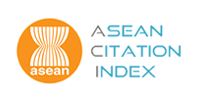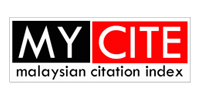Smart self-assembled polymeric-MMT/Moringa Oleifera L. particles by solvent replacement method
DOI:
https://doi.org/10.58915/ijneam.v17i4.1281Keywords:
Nanoparticles, Moringa Oleifera L., Nanoprecipitation, Encapsulation, Self-assemblingAbstract
Obesity, stemming from metabolic syndrome and energy imbalance, is a common health concern characterized by excess energy consumption and fat buildup. Moringa Oleifera L. (MO), known for its anti-obesity properties, is extracted via Soxhlet extraction. MO is extracted using the Soxhlet extraction method. To evaluate the antioxidant properties of MO powder, several analyses were conducted, including the assessment of total phenolic content (TPC), total flavonoid content (TFC), 2,2'-azino-bis (3-ethylbenzothiazoline-6-sulphonic acid) (ABTS) activity, and 2,2-diphenyl-1-picrylhydrazyl (DPPH) activity. The TPC and TFC, DPPH activity, and ABTS activity values were determined to be 386.7 mg GAE/g and 82.33 mg QE/g, 32.86 %, and 49.4 % respectively. To improve drug delivery, the freeze-dried MO powder was encapsulated within a polymeric carrier, poly(e-caprolactone) (PCL). Moreover, the incorporation of montmorillonite (MMT) into the MO-loaded PCL nanoparticles enhanced the encapsulation efficiency and drug loading of MO. Nanoprecipitation was employed as a method to produce the nanoparticles, and the effects of four key parameters were studied: the ratio of aqueous phase volume to organic volume (1.5 – 10), stirring speed (400 rpm – 1200 rpm), mass weightage of MO (1 % -5 %), and mass weightage of MMT (2 % - 5 %). Design Expert was utilized for full factorial analysis to assess the impact of these parameters on encapsulation efficiency and drug loading. The optimal formulation was achieved at the ratio of aqueous phase volume to the organic volume of 1.5, stirring speed of 400 rpm, mass weightage of MO at 1 %, and mass weightage of MMT at 5% The expected encapsulation efficiency is 91.33 % and drug loading is 6.49 %.

















